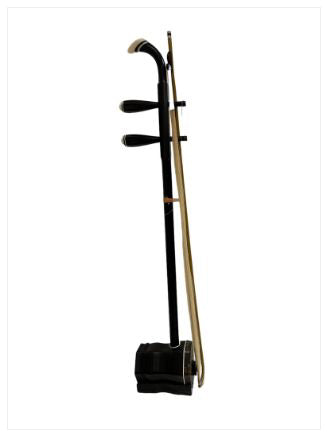The Erhu, often referred to as the "Chinese violin," is a captivating instrument with a hauntingly beautiful sound. Its unique design and expressive capabilities make it a favourite among musicians and enthusiasts alike. To harness the full potential of this traditional two-stringed instrument, mastering the playing techniques is essential. In this article, we'll explore the fundamentals of Erhu playing and offer valuable tips to help you embark on your musical journey.
Understanding the Erhu's Anatomy
Before diving into playing techniques, it's crucial to familiarize yourself with the Erhu's components:
The Sound Box: The resonating body of the Erhu, usually made from a dried gourd or wooden chamber, amplifies the sound.
The Strings: The Erhu features two strings, typically made of silk or nylon, which are stretched over a wooden bridge.
The Bow: The bow is unique to the Erhu. It consists of two horsehair strings stretched between a wooden bow, creating tension to produce sound.
Basic Playing Techniques
Bowing: Hold the bow between your thumb and the first two fingers of your right hand. The horsehair should be tightened and rosin applied to create friction. Practice smooth and controlled bowing motions.
Fingering: Use your left hand to press down on the strings, changing the pitch. Place your fingers lightly on the strings, near the tuning pegs, and experiment to find the desired notes.
Vibrato: Vibrato adds depth and expression to Erhu music. To execute a vibrato, wiggle your left hand fingers while maintaining contact with the string. This technique requires practice to control the speed and width of the vibrato.
Glissando: Sliding between notes smoothly is a key technique in Erhu playing. Achieve this by moving your finger along the string while applying slight pressure.
Tips for Learning and Improvement
Start with Proper Posture: Maintain an upright posture while playing. Sit on the edge of a chair with your back straight and the Erhu held between your knees. This position allows for better control and sound projection.
Practice Bow Control: Achieving a consistent and even tone requires precise bow control. Practice slow, controlled bow strokes to master this technique.
Finger Strength and Dexterity: Build finger strength and dexterity through exercises like scales and finger stretching. This helps improve your ability to play intricate melodies.
Ear Training: Train your ear to recognize pitch and intervals. Listen to recordings of Erhu music and try to replicate the melodies by ear. This will enhance your ability to play by ear and improvise.
Seek Guidance: Consider taking lessons from an experienced Erhu teacher or enrolling in a music school. Personalized guidance can significantly accelerate your learning process.
Regular Practice: Consistency is key to mastering the Erhu. Set aside dedicated practice time each day to build muscle memory and improve your skills.
Record Yourself: Recording your practice sessions allows you to review your performance objectively and identify areas for improvement.
Explore Different Genres: While the Erhu is often associated with traditional Chinese music, don't hesitate to explore various musical genres. Experiment with fusion and contemporary styles to broaden your repertoire.
In conclusion, mastering the Erhu is a rewarding journey that requires dedication and patience. By understanding its anatomy, mastering basic techniques, and following these tips, you'll find yourself making beautiful music with this mesmerizing instrument. Whether you're a beginner or an experienced musician, the Erhu offers a world of possibilities for musical expression and creativity.
Related Content:
Chinese Musical Instruments
Pipa in Contemporary Music: Bridging Ancient Tradition and Modern Innovation

